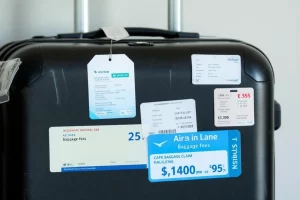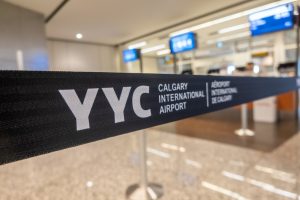Flying from Canada to India involves crossing up to 13.5 time zones on journeys lasting 15-20 hours or more, making jet lag worse. Jet lag tends to further deteriorate when traveling east, such as on these international flights, and recovery can sometimes take a few weeks. However, with the right strategies, you can reduce recovery time and stay comfortable and healthy throughout your trip. To overcome jet lag, quickly align your body’s clock with the local sunrise and sunset schedule.
Key Takeaways for Managing Jet Lag Symptoms on Long Haul Flights
Start adjusting your sleep schedule 3-4 days before departure by going to bed 1-2 hours earlier each night.
Use light exposure during early morning hours, stay hydrated with 8-10 glasses of water during the flight, and consider melatonin or other sleep medicine, including sleeping pills if advised by a doctor, to reduce jet lag recovery time.
Wear compression socks and bring a neck pillow, sleep mask, and healthy snacks to prevent discomfort during the long journey.
Set devices to India time immediately upon boarding and follow the destination’s meal and sleep schedule during the flight. Daytime napping should be limited to 15 to 20 minutes to avoid disrupting your sleep schedule.
Pre-Flight Preparation: Packing Your Carry On for Comfort and Health
Adjust Your Sleep Patterns to Minimize Jet Lag Symptoms and Sleep Deprivation
Begin shifting your bedtime earlier by 1-2 hours starting 3-4 days before your flight. This helps your body’s internal clock adapt to India’s time zone and reduces the risk of sleep deprivation during plane travel. Use bright light exposure in the early morning hours and avoid electronic devices before bedtime to support this shift.
Melatonin supplements (0.5-3 mg) taken 30 minutes before your new bedtime can promote sleep and ease adjustment. If you have existing sleep disorders or are considering sleep medicine or sleeping pills, consult your doctor before use. Start with a low dose and increase if needed.
Hydration, Exercise, and Packing Essentials for Long Haul Flights
Hydration Essentials
Stay well hydrated before and during your flight by drinking plenty of water.
Avoid alcohol and too much caffeine, as these can disrupt sleep and cause dehydration.
Carry a reusable bottle to stay hydrated throughout your journey.
Packing Essentials
Bring compression socks to prevent blood clots and reduce leg swelling during the long flight.
Use a supportive travel pillow and a sleep mask to help you sleep better on the airplane cabin.
Pack healthy snacks like nuts and fresh fruits to maintain proper nutrition aligned with your destination’s meal times.
Pack your carry on thoughtfully, keeping in mind airport security requirements for liquids and certain items.
Familiarize yourself with airport security rules to ensure a smooth process.
Exercise Clean
Engage in light to moderate exercise in the days leading up to your trip to help regulate your circadian rhythm.
Avoid intense workouts the day before flying.
Exercise releases endorphins which reduce stress and promote sleep.
In-Flight Strategies to Reduce Jet Lag Symptoms and Stay Comfortable
Follow Your Destination’s New Time Zone During the Flight
Try to fall asleep only during India nighttime hours, even if this means staying awake longer on the plane. Use entertainment or light reading to stay alert during India daytime. Download movies and podcasts in advance for in-flight entertainment, especially if Wi-Fi is limited or unavailable.
Eat meals according to India’s schedule rather than the airline’s service times. If meals don’t align, rely on your own snacks to keep your body clock on track. Eating smaller meals can prevent stomach problems related to dehydration and poor plane food.
Move Regularly and Manage Comfort in the Airplane Cabin
Walk the aisle every 2 hours for 5-10 minutes to improve circulation. Perform simple seated exercises like ankle circles and shoulder rolls to reduce stiffness. Use noise-canceling headphones or earplugs to reduce noise during the flight.
Remove shoes during cruising altitude but keep socks on to maintain foot warmth and hygiene.
Apply moisturizer and lip balm regularly to combat dry cabin air and low humidity. Use saline nasal spray before takeoff and landing to ease sinus discomfort caused by changes in air pressure. Keep a few essential toiletries in your carry on for freshening up during the flight.
Flight attendants can be helpful resources during your journey; don’t hesitate to ask them for assistance or advice on managing comfort and health during the flight.
Avoid excessive alcohol and caffeinated drinks during the flight to stay hydrated and promote quality sleep.
Be cautious to avoid light exposure at the wrong times, which can shift your internal clock in the wrong direction and worsen jet lag symptoms.
Upon Arrival in India: Managing Jet Lag Symptoms and Adjusting to Your New Location
Resist napping during the day, even if you feel exhausted. Exposure to bright morning light between 6-10 AM local time for the first few days helps reset your circadian rhythm.
Take melatonin 0.5-3 mg about 30 minutes before bedtime for up to a week to support your new sleep schedule.
Stay consistent with sleep and meal times to help your body adjust. Jet lag symptoms typically improve within a few days but can last up to a few weeks for some travelers. Other symptoms of jet lag may include gastrointestinal discomfort, mood changes, and difficulty concentrating.
Aim to wake at a time that aligns with your new time zone to feel well rested and reduce the impact of jet lag, which is often worse in the initial days after arrival.
Managing Layovers: Comfort and Health Tips for Long Haul Flights with Stopovers
If you have long layovers, make the most of the time by walking around and stretching to keep your blood circulation active and reduce stiffness. Avoid heavy meals that might leave you feeling sluggish; instead, choose light, protein-rich snacks to maintain your energy levels.
Additionally, consider using airport shower facilities during extended connections to refresh and recharge. A quick shower can help you feel revitalized and ready for the next leg of your journey, making your travel experience more comfortable and less tiring.
For more information on stopover options, check out our guide on Layover Destinations From Canada to India
Frequently Asked Questions About Jet Lag and Long Haul Flights
How Long Does Jet Lag Last Flying Canada to India Flights?
Jet lag can last 7-10 days, with initial adjustment in a few days. Eastward travel tends to cause more severe symptoms, and for some, symptoms may persist for a few weeks.
Should I Take Melatonin or Sleep Medicine as a Sleep Aid?
Melatonin can help realign your internal clock when taken at the right time. Other sleep medicine, including sleeping pills, may be considered but should only be used under medical advice, especially if you have sleep disorders. According to international classification systems, jet lag is recognized as a circadian rhythm sleep disorder.
How to Stay Hydrated on a Long Flight?
Drink 8-10 glasses of water, avoid alcohol and too much caffeine, and bring a reusable water bottle.
What Health Risks Should I Be Aware of During Long Haul Flights?
Prolonged sitting increases risk of blood clots; wear compression socks and move regularly. Low cabin humidity and changes in air pressure can cause dehydration and sinus discomfort.
Can I Avoid Jet Lag Completely?
While it may not be possible to completely cure jet lag, following strategies like adjusting your sleep schedule before travel, managing light exposure, staying hydrated, and using melatonin can significantly reduce jet lag symptoms.
What Are the Best Seats for Comfort on Long Flights?
Choosing a window seat can help you rest better by providing a surface to lean on and fewer disturbances. Seats with extra legroom or in premium economy can also increase comfort during long haul flights.
By following these top tips and jet lag hacks tailored for Canada to India flights, including managing overnight flights and utilizing a sleep mask, you can reduce travel fatigue, stay healthy, and arrive ready to enjoy your trip. Proper preparation and in-flight habits, along with assistance from flight attendants, are key to managing the challenges of long haul flights and significant time zone changes. Book your flight early for good seats and apply these flight comfort tips to make your journey more pleasant.






